生 ⇆ 熟 ⇆ 福 Raw ⇆ Ripened ⇆ Happiness
- Dual-channel HD Video, colour, sound, duration 20 min 12 sec, x6 wooden stamps (sizes variable), Red ink pad, Clay/mud (locally sourced), Paper map of Taiwan 110 x 70 cm, Kinetic machine (1st edition) wooden, wooden stamp, dimensions variable, Wooden crate, Kinetic machine (2nd edition) steel, motor, wooden stamp, dimensions variable, 2021
《生⇆熟⇆福》作品的創作靈感來自於尋找日據時期的家族戶口名簿,其過程中的反思以及體感表現,面對國家認可的身份得依賴殖民時期的邏輯思維與文件感到反感與被傷害,但也不得以地需要透過這些文件重新發現疏遠的宗親脈絡,此作品結合平面作品、動力裝置和行為藝術的表現試圖提問強勢的「刻印文化」與「沒有文字」的少數族群所帶來系統性的隱形傷害。生、熟、福等歸類用語初至於中國清朝政府至日據時期,來歸類原住民族的同化程度。透過《生⇆熟⇆福》作品去探討被標籤化的邊緣身體。生、熟、福,三個字刻印在一顆有重量、政府官員所使用的木製印章上,安裝至動力裝置上,我的身體躺在一個白色的展台上,有如在博物館裡,原住民的身體和女性的身體一同在父權主義下的觀看模式被標本化,我的身體被動地被動力裝置上的印章開始往我的身體烙印蓋章,直到我全身通紅,像是受傷後的身體,這個行為表演的過程隱喻著世代一直被標籤化的過程,印章是強勢文化,也是刻印文化的顯性代表,它是權力賦予標籤化的合法性。
Raw ⇆ Ripened ⇆ Happiness encompasses a series of works that contemplate disconnection resulting from colonisation. Stamps traditionally identified a person and determined assigned categories by brandishing a mark onto official documents created in the colonial tongue. These documents often removed Indigenous lineages and addresses. Through this action, entire generational identities shifted to suit the colonial whim as families were forced to relocate. These actions reflect cultural and physical disconnection. Often, traces remained buried, scarce, and faint. This is seen in the faint traces left behind during the action of stamping with mud and ink. In both live and digitalised performances Ciwas uses their body as a stamp, with a handheld stamp, and also has their body stamped by a kinetic machine that brandishes a mallet head repeatedly down onto Ciwas's body. The kinetic machine brandishes the seal onto the body as Ciwas is silent. By stamping repeatedly on both body, paper and maps, Ciwas seeks to acknowledge past actions in order to navigate the future.




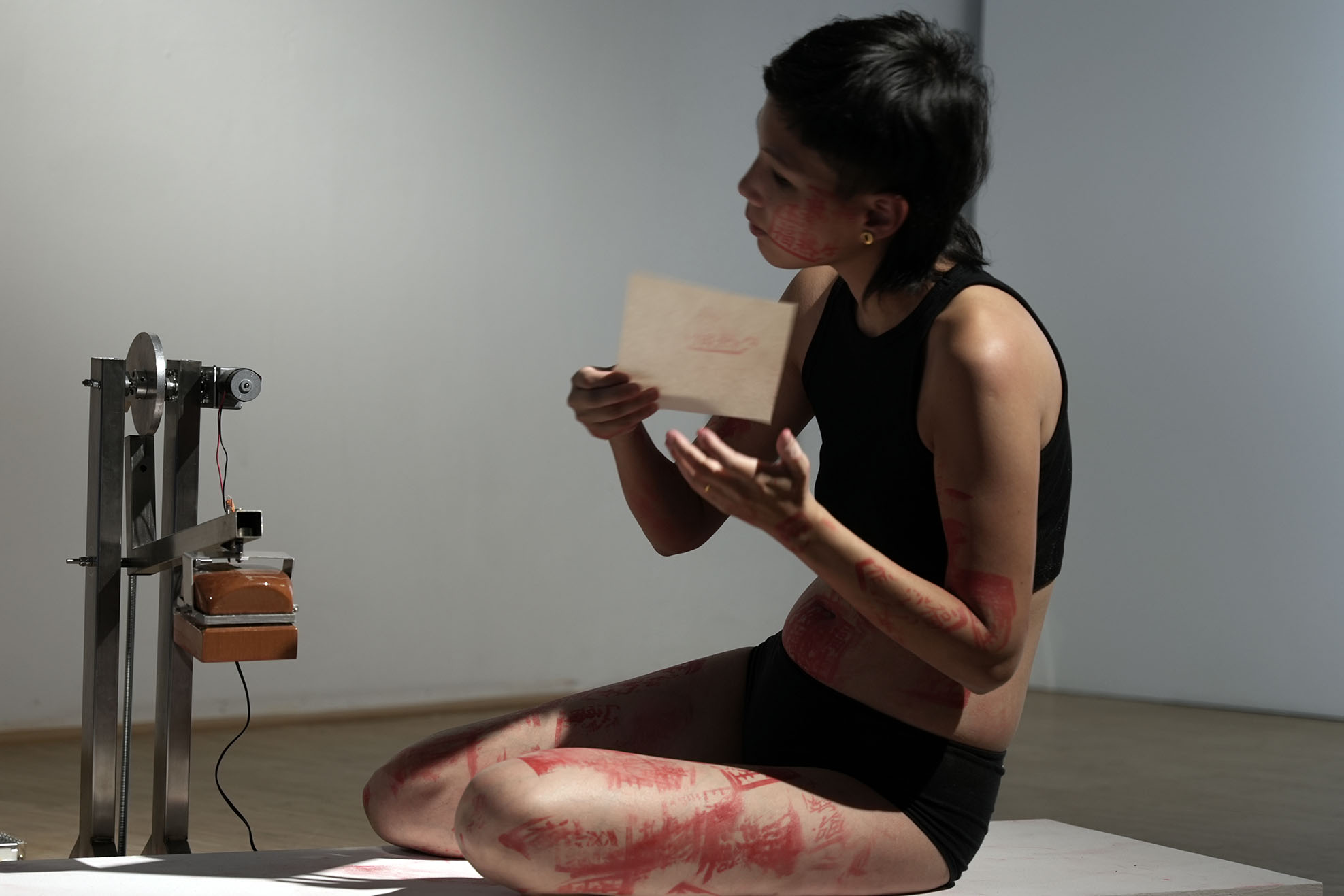

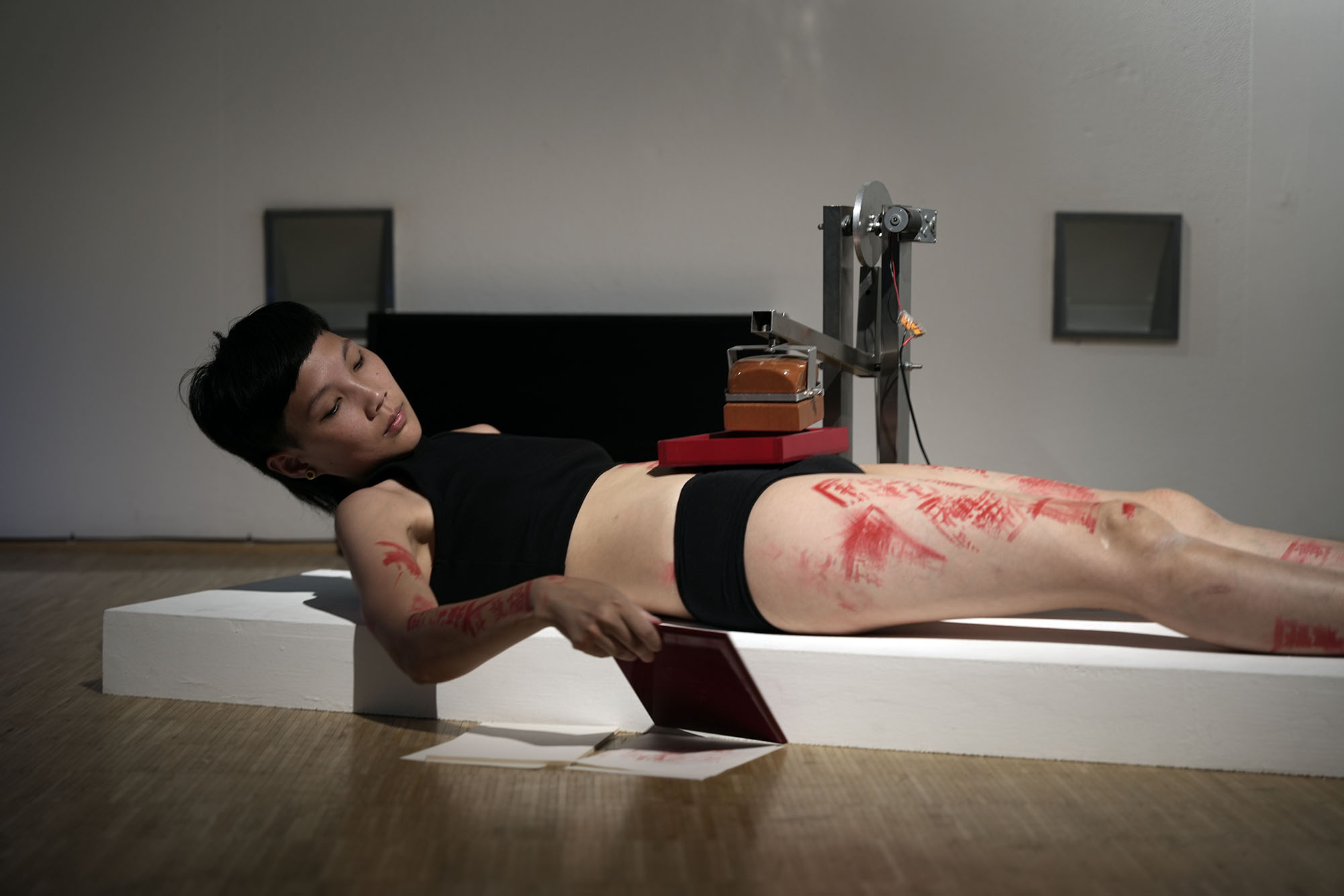




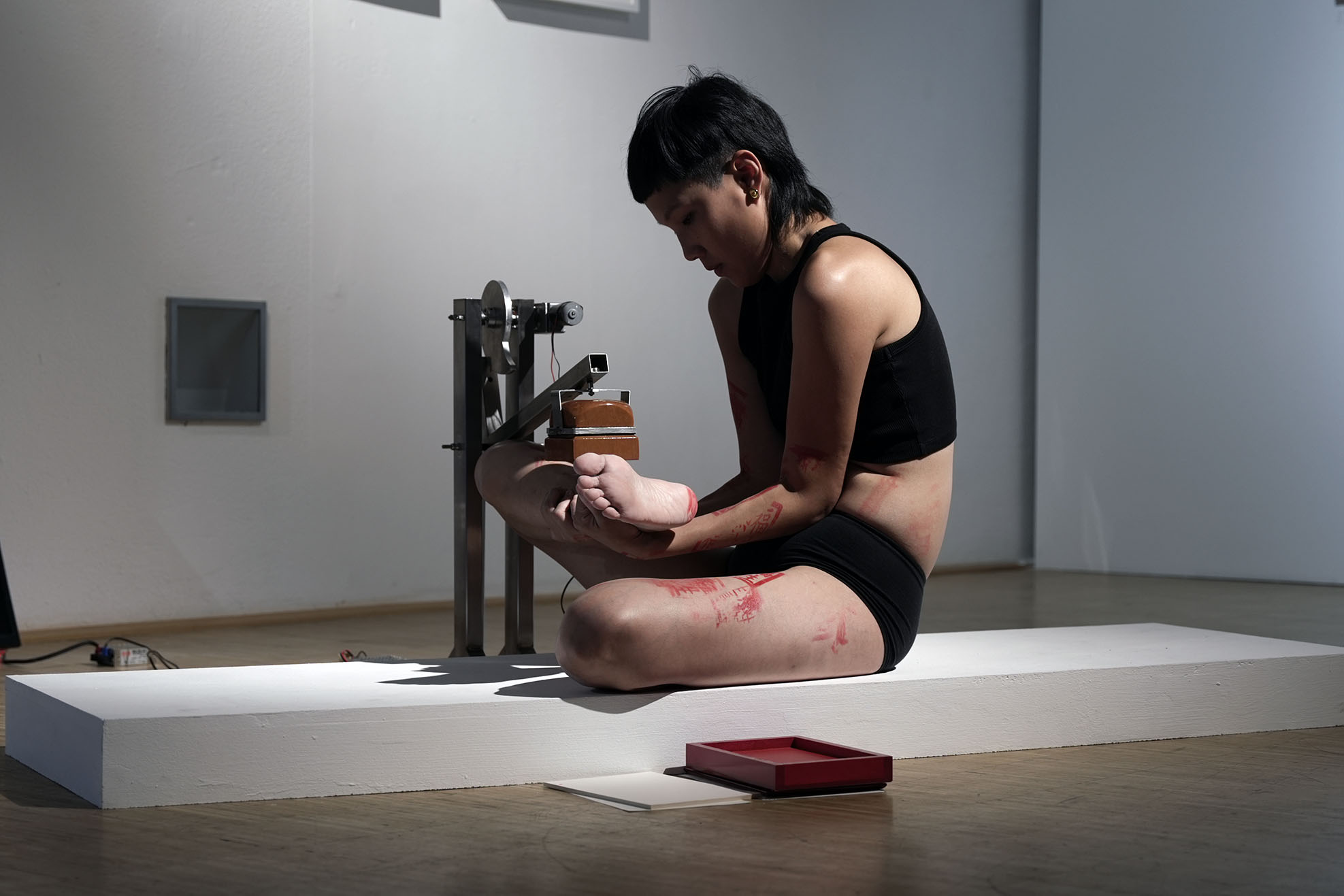
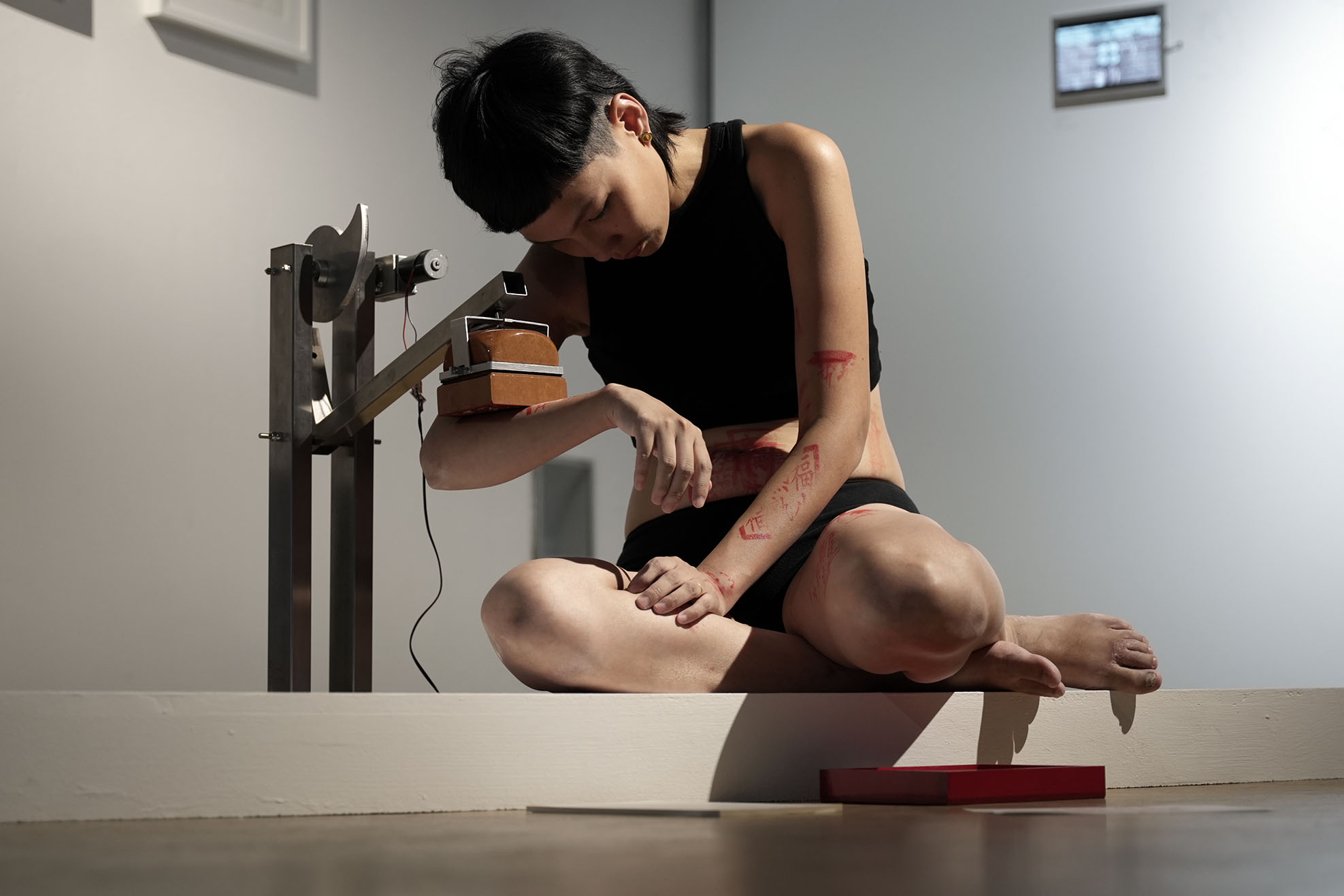




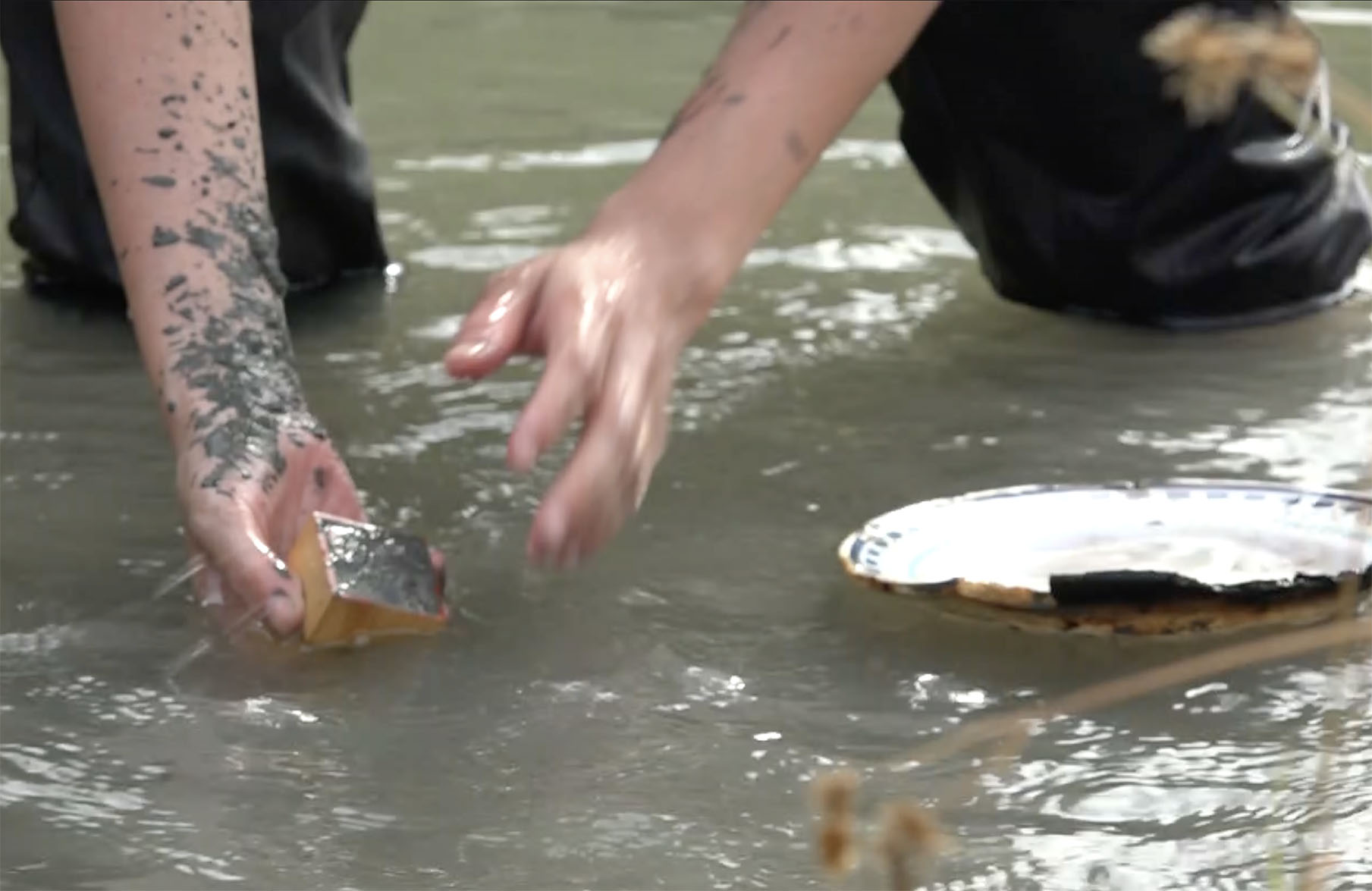

Live performance video stills, 2019


Paper mud traces, 2019